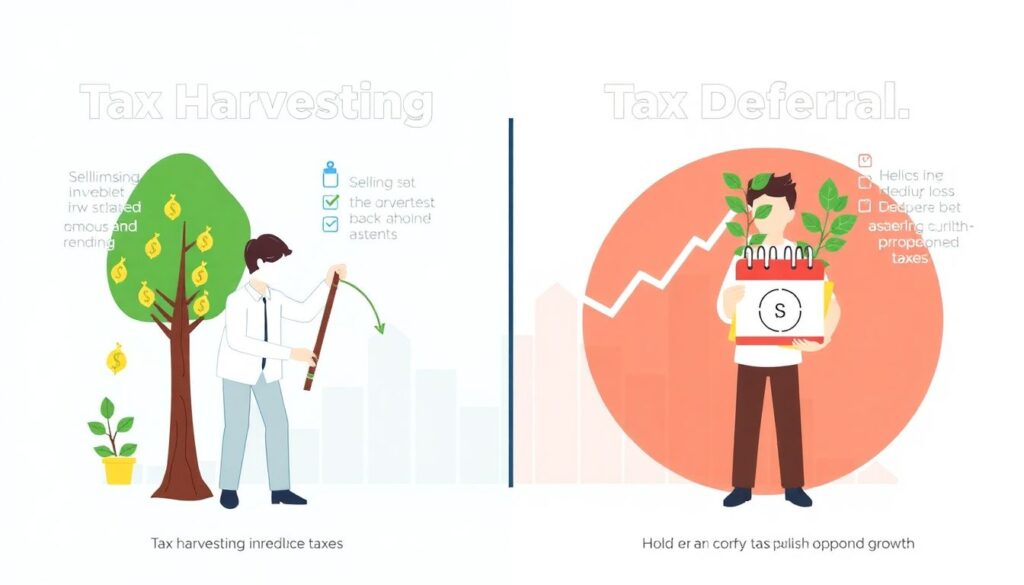Understanding Investment Tax Harvesting

Investment tax harvesting, also known as tax-loss harvesting, is a portfolio optimization strategy that involves the intentional realization of capital losses to offset capital gains and reduce taxable income. This technique is commonly used in taxable investment accounts to improve after-tax returns. While the fundamental concept is straightforward, its effective implementation requires a deep understanding of tax regulations, asset behavior, and timing strategies. Tax harvesting can be applied to both short-term and long-term capital assets, with the goal of minimizing the investor’s overall tax liability.
Core Definitions and Tax Mechanics
To fully grasp tax harvesting, it’s essential to distinguish between realized and unrealized gains. A realized gain or loss occurs when an investment is sold. Conversely, an unrealized gain or loss is a change in value of a currently held asset. The U.S. Internal Revenue Code differentiates between short-term (held ≤1 year) and long-term (held >1 year) capital gains, which are taxed at different rates. Losses realized in the same tax year can offset gains of the same type and, if losses exceed gains, up to $3,000 of ordinary income annually.
A key constraint in tax harvesting is the wash-sale rule, which disallows a tax deduction if the same or a “substantially identical” security is purchased within 30 days before or after the sale that generated the loss. This rule necessitates strategic substitution of assets to maintain portfolio exposure without violating tax code provisions.
Optimal Timing: Beyond Year-End Harvesting

While many investors execute tax harvesting strategies in Q4, this conventional timing often fails to capture mid-year volatility. A more dynamic approach involves monitoring portfolio positions throughout the year and identifying harvesting opportunities during market corrections or sector-specific drawdowns. By employing rolling tax-loss harvesting, investors can realize losses opportunistically, rather than waiting for December.
For example, if a technology ETF drops 15% in April due to regulatory concerns, a proactive investor might sell that position and switch into a comparable ETF with similar exposure but different underlying holdings. This allows for the realization of the tax loss while maintaining market exposure, thus preserving investment strategy continuity.
Diagrammatic Representation of Tax Harvesting Flow
Imagine a flowchart with the following sequential nodes:
1. Portfolio Review → 2. Identify Underperforming Assets → 3. Analyze Unrealized Losses → 4. Sell Assets with Losses → 5. Replace with Non-Identical Alternatives → 6. Record Realized Loss for Tax Filing.
This decision tree highlights the critical control points in executing a compliant and beneficial harvest. Each node requires quantitative analysis, including cost basis tracking, correlation analysis between original and replacement assets, and forecasting of potential recovery trajectories.
Contrasting Tax Harvesting with Tax Deferral Strategies

Tax harvesting is often contrasted with tax deferral strategies, such as holding appreciated assets to defer capital gains taxes. While deferral postpones tax liability, harvesting proactively reduces it. In a rising market, deferral might seem more advantageous due to compound growth on untaxed gains. However, during periods of high volatility or a flat market, harvesting losses can provide immediate tax benefits while preserving long-term growth potential through reinvestment.
For instance, an investor who harvested $20,000 in capital losses in a bear market may use those losses to offset future gains in a bull market, effectively smoothing out tax exposure across cycles. In contrast, a strict deferral approach may result in a concentrated tax event when the asset is eventually sold.
Advanced Applications: Gain Harvesting and Strategic Rebalancing
A less common but equally strategic technique is gain harvesting. If an investor is in a low-income year and falls into the 0% long-term capital gains bracket, intentionally realizing gains can reset the cost basis without incurring tax. This is particularly useful for retirees or individuals transitioning between jobs. It also creates a higher cost basis, reducing future tax liability if the asset is sold in a higher-tax year.
Strategic rebalancing can also be synchronized with harvesting. Suppose a portfolio has drifted from its target allocation due to equity appreciation. Selling overweighted positions to realize gains can be offset by harvesting losses elsewhere, achieving both tax efficiency and portfolio realignment. This dual-purpose tactic requires meticulous tax lot selection, often facilitated by software-driven portfolio management systems.
Non-Traditional Assets and Tax Harvesting
While most tax harvesting is performed with equities, ETFs, and mutual funds, non-traditional assets such as cryptocurrency present both challenges and opportunities. Since cryptocurrencies are classified as property by the IRS, they are not subject to the wash-sale rule (as of 2024). This regulatory gap allows for immediate repurchase of the same asset after a loss sale, enabling more aggressive harvesting strategies.
Consider an investor who holds Bitcoin purchased at $40,000, which drops to $30,000. Selling and repurchasing the same asset within minutes locks in a $10,000 capital loss without altering the investment position. However, this strategy carries execution risk, such as price slippage and liquidity constraints, and requires careful documentation to withstand audit scrutiny.
Conclusion: Integrating Tax Harvesting into Comprehensive Strategy
Investment tax harvesting is not a standalone tactic but a critical component of a comprehensive tax-aware investment strategy. It requires coordination between portfolio management, tax planning, and regulatory compliance. By leveraging both loss and gain harvesting, dynamically timing harvests, and utilizing non-traditional asset classes, investors can optimize their after-tax returns in a way that traditional buy-and-hold strategies may overlook.
Forward-thinking investors and advisors should integrate tax harvesting algorithms into their rebalancing frameworks and utilize tax-aware optimization models that consider not only asset performance but also tax implications. As tax laws evolve, staying informed and agile will remain key to maximizing the benefits of harvesting across market cycles.

